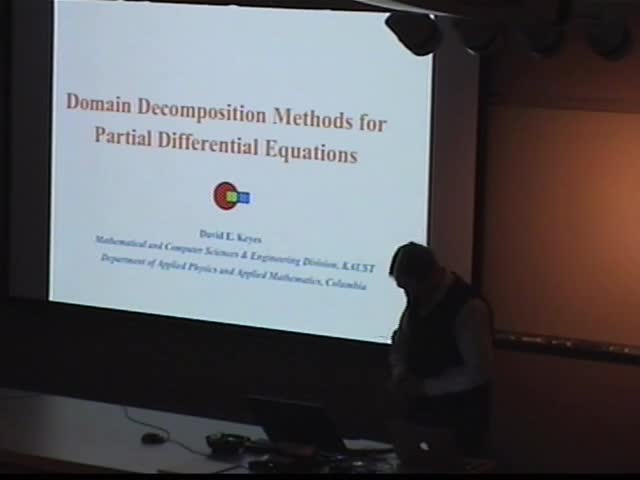Domain decomposition methods for partial differential equations
Presenter
November 28, 2010
Keywords:
- Domain decomposition
MSC:
- 65M55
Abstract
Domain decomposition, a form of divide-and-conquer for mathematical problems
posed over a physical domain is the most common paradigm for large-scale
simulation on massively parallel, distributed, hierarchical memory
computers. In domain decomposition, a large problem is reduced to a
collection of smaller problems, each of which is easier to solve
computationally than the undecomposed problem, and most or all of which can
be solved independently and concurrently. Domain decomposition has proved to
be an ideal paradigm not only for execution on advanced architecture
computers, but also for the development of reusable, portable software. The
most complex operation in a typical domain decomposition method – the
application of the preconditioner – carries out in each subdomain steps
nearly identical to those required to apply a conventional preconditioner to
the undecomposed domain. Hence software developed for the global problem can
readily be adapted to the local problem, instantly presenting lots of legacy
scientific code for to be harvested for parallel implementations. Finally,
it should be noted that domain decomposition is often a natural paradigm for
the modeling community. Physical systems are often decomposed into two or
more contiguous subdomains based on phenomenological considerations,
and the subdomains are discretized accordingly, as independent
tasks. This physically-based domain decomposition may be mirrored in the
software engineering of the corresponding code, and leads to threads of
execution that operate on contiguous subdomain blocks. This tutorial
provides an overview of domain decomposition and focuses on the mathematical
development of its two main paradigms: Schwarz and Schur preconditioning and
their hybrids.
